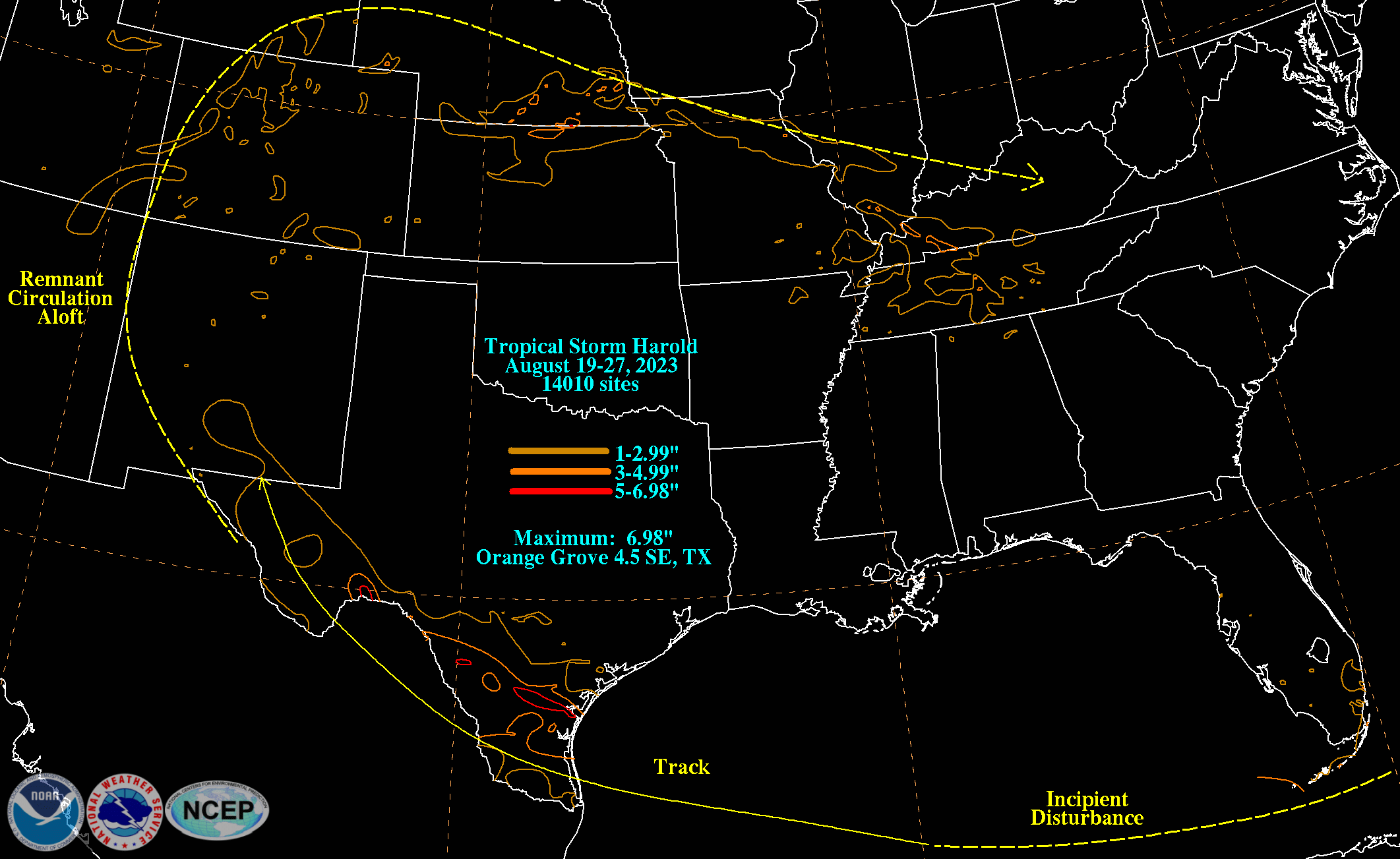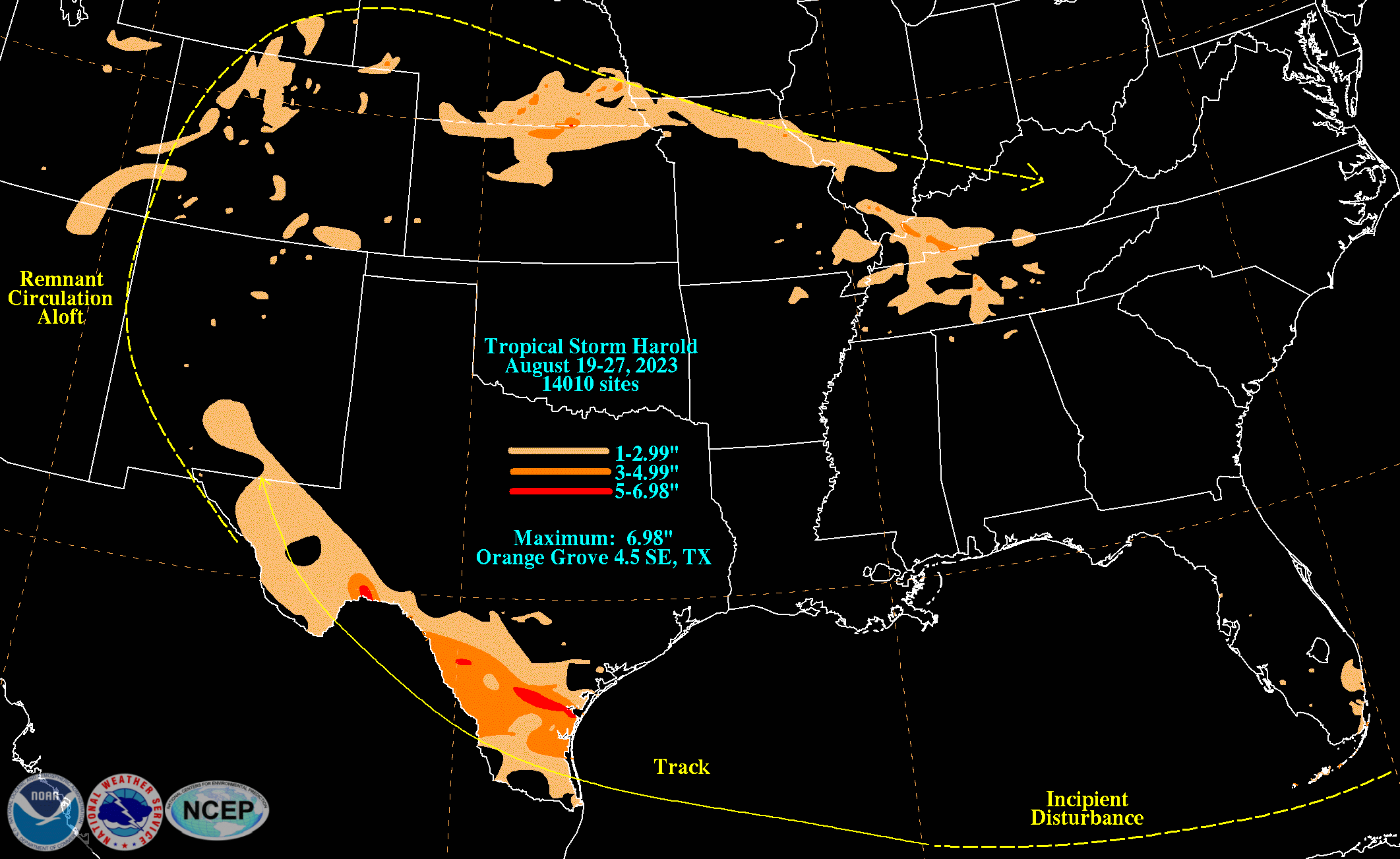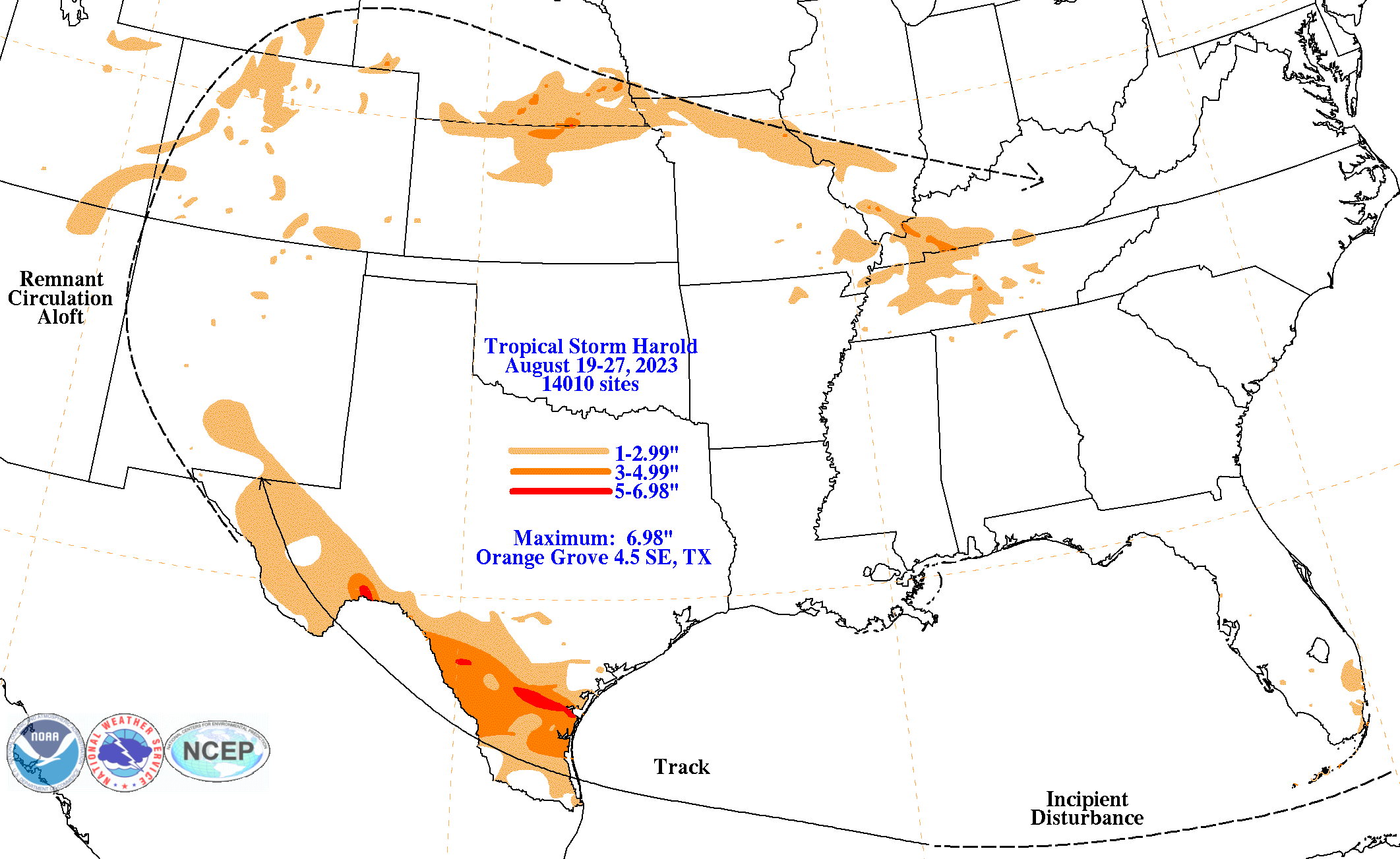An area of disturbed weather developed to the north of Hispaniola on August 17th. The disturbance progressed westward, passing through The Bahamas and the Florida Strairs over succeeding days, entering the Gulf of Mexico the morning of the 20th. The developing system became better organized as it crossed the Gulf, but lacked sufficient organization to be deemed a tropical cyclone by late on the 21st. During the afternoon of the 22nd, an scatterometer data discovered that the system had acquired a closed, well-defined center of circulation, and the system was designated the ninth tropical depression of the season. The tropical depression became better organized as it approached Texas, and was upgraded to Tropical Storm Harold early on the 22nd, as the broad storm's rain bands moved onshore. Shortly before landfall, Harold's center reformed to the north of its previous position, and the storm strengthened further to achieve its peak intensity as a modest tropical storm. Harold made landfall on Padre Island, Texas during the late morning of the 22nd. Harold weakened quickly as it moved inland with its upper level circulation beginning to outpace its surface circulation, dropping back to tropical depression status later that afternoon. Late that day, Tropical Depression Harold crossed into northern Mexico while weakening. Harold's surface low moved into the Texas Big Bend before dissipating. Its circulation aloft moved across the southern Rockies, across the Four Corners, and could be followed on radar imagery as far as northwest Colorado. Thereafter, water vapor imagery followed its mid-level center into Nebraska, with convective clusters occasionally restrengthening the circulation aloft as it moved into Kentucky, before it became strung out and ill-defined by the morning of the 28th. Some heavy rainfall across the Carolinas on the 28th can be indirectly attributed to Harold, but for the purposes of the rainfall graphics was not included as the circulation aloft became more vague.
The graphics below show the storm total rainfall for Harold, which used rain gage information from National Weather Service River Forecast
Centers, xMACIS2, National Weather Service Forecast Offices, and CoCoRAHS.
 |
 |
 |